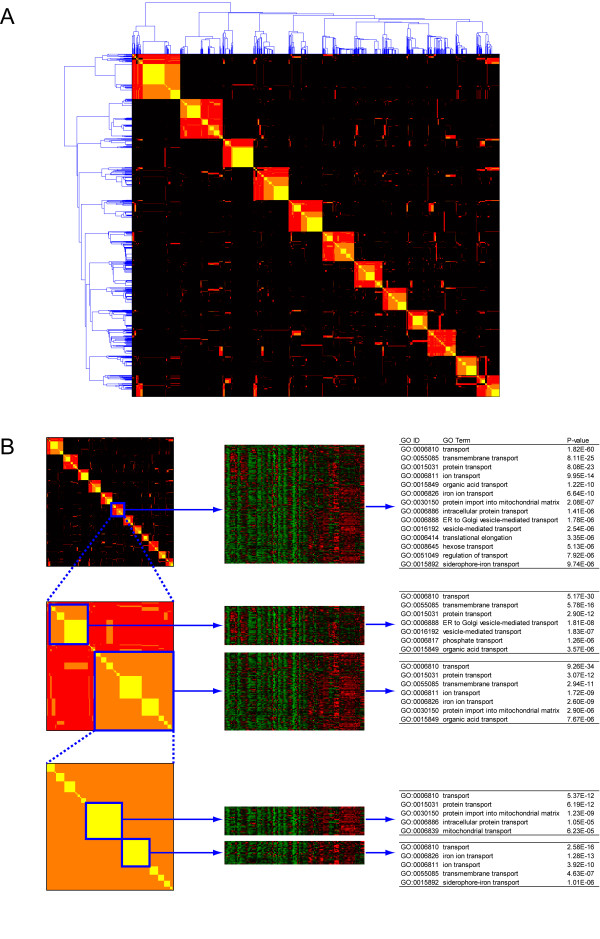Figure 4.
Hierarchical structure of modules generated by SSIM approach. Using different preference values, three sets of modules (12, 18 and 37 modules) were obtained (see Additional file 4) and the membership of genes over the three module sets was expressed as a matrix form. When gene i and j belong to the same module and the membership is conserved in any one, two and three sets, the element of matrix in ith row and jth column is set to 1 (red, least conserved over the sets of modules), 2 (orange) and 3 (yellow, most conserved), respectively. If two genes are not in the same module, the corresponding element in the matrix has a zero value (black). Hierarchical clustering result of the matrix was shown in (A). Most orange and yellow squares are subsets of red squares along the diagonal, which means that a large module is hierarchically split into several smaller modules according to the change of preference values. (B) As an example, the decomposition of a large module (red square) identified in "12-module set" into smaller modules obtainable in "18-" and "37-module set" is shown with the expression profiles of genes and enriched GO BP terms. A module representing general transport function (12-module set) is stratified into modules specifically related to protein and iron ion transport (37-module set).

